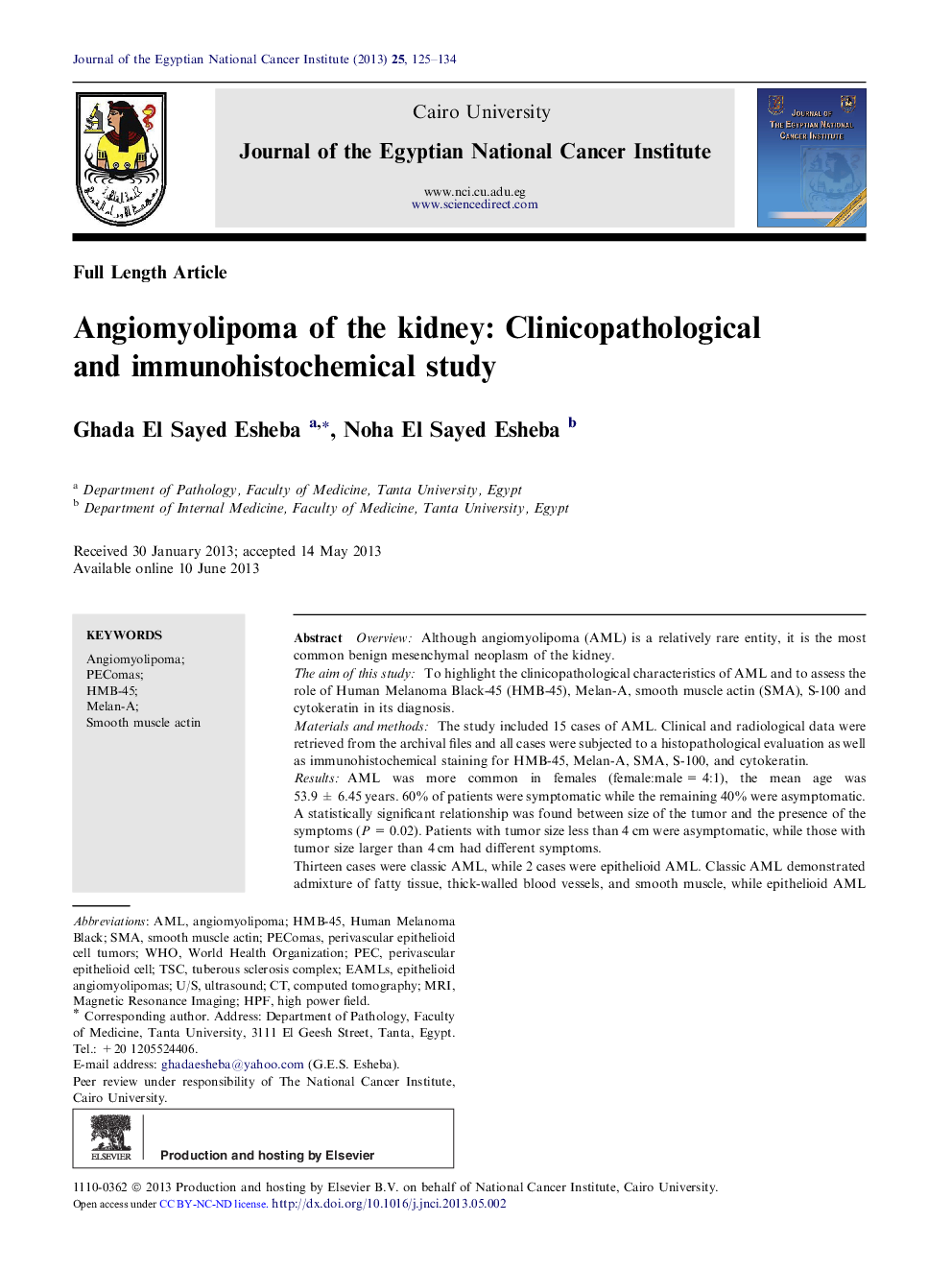| Article ID | Journal | Published Year | Pages | File Type |
|---|---|---|---|---|
| 3989097 | Journal of the Egyptian National Cancer Institute | 2013 | 10 Pages |
OverviewAlthough angiomyolipoma (AML) is a relatively rare entity, it is the most common benign mesenchymal neoplasm of the kidney.The aim of this studyTo highlight the clinicopathological characteristics of AML and to assess the role of Human Melanoma Black-45 (HMB-45), Melan-A, smooth muscle actin (SMA), S-100 and cytokeratin in its diagnosis.Materials and methodsThe study included 15 cases of AML. Clinical and radiological data were retrieved from the archival files and all cases were subjected to a histopathological evaluation as well as immunohistochemical staining for HMB-45, Melan-A, SMA, S-100, and cytokeratin.ResultsAML was more common in females (female:male = 4:1), the mean age was 53.9 ± 6.45 years. 60% of patients were symptomatic while the remaining 40% were asymptomatic. A statistically significant relationship was found between size of the tumor and the presence of the symptoms (P = 0.02). Patients with tumor size less than 4 cm were asymptomatic, while those with tumor size larger than 4 cm had different symptoms.Thirteen cases were classic AML, while 2 cases were epithelioid AML. Classic AML demonstrated admixture of fatty tissue, thick-walled blood vessels, and smooth muscle, while epithelioid AML was composed mainly of epithelioid cells and contained no fat. HMB-45 was positive in all cases of AML (100%), Melan-A was positive in 13/15 (87%) while SMA was positive in 11/15 (73%) of AML with variable staining intensity. All cases of AML were negative for S-100 and cytokeratin.ConclusionAMLs have characteristic clinicopathological and immunohistochemical features and their recognition is crucial for proper diagnosis and treatment.
